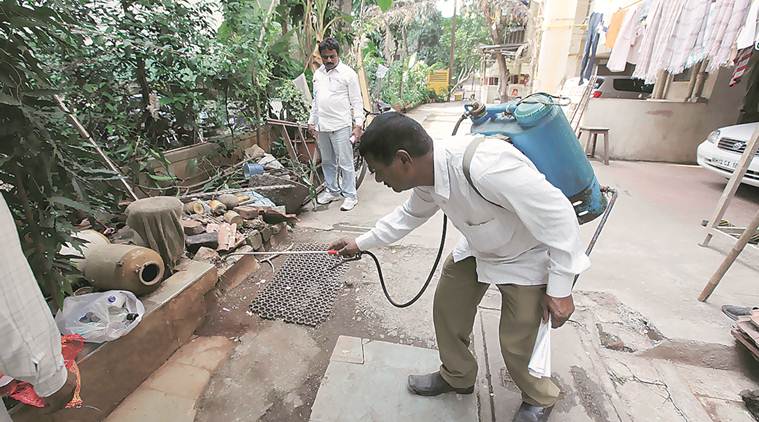 Pune has a “high disease burden” with all four serotypes of dengue circulating in the city.
Pune has a “high disease burden” with all four serotypes of dengue circulating in the city.
While Pune records a few hundred cases of dengue every year, a first of its kind study in the city has revealed that the actual number of people exposed to the dengue virus could be several times higher. The study, supported by the Indian Council of Medical Research and published in the PLoS Neglected Tropical Diseases journal, estimates that over eight per cent of the city’s population, or close to 60,000 people, could be exposed to the dengue virus.
Researchers said that in over 81 per cent of people who participated in the study, they found the presence of antibodies against dengue virus, indicating an “intense transmission of the virus” and past exposure to infection.
The study found an overall “high disease burden” of dengue in the city but suboptimal immunity in younger groups.
Dr A C Mishra, main author of the study and former director of the National Institute of Virology (NIV), told The Indian Express that Pune has a “high disease burden” with all four serotypes of dengue circulating in the city.
“Dengue is a much larger problem in India than what is normally perceived. Hence, management of the disease needs more attention,” he said.
Dengue is emerging as the most important vector-borne public health problem, spread by rapid and unplanned urbanisation, high human density and weak management of the disease. Globally, there are approximately 390 million infections annually, 96 million clinical cases and 20,000 deaths. India accounts for almost 34 per cent of these cases.
According to the National Vector Borne Disease Control Programme, last year there were 1.9 lakh dengue cases and 325 deaths in the country. Until July this year, there were 15,000 cases and 38 deaths.
“An official report claimed only 6,792 cases of dengue were reported from entire Maharashtra in 2016. In our study, we have estimated 47,000 to 59,000 cases per year in Pune city alone. It is strongly recommended that for a disease like dengue, serosurveys should be conducted periodically. It could shed light on true dengue infections in the population and can be a good tool to monitor impact of interventions at the population level,” Dr Mishra, who is also Director at the Interactive Research School for Health Affairs, Bharati Vidyapeeth, said.
What the Centre and state provide are numbers captured on the ground and sent to them. Despite dengue being a notifiable disease, the reporting system is weak and, hence, the number of cases is grossly underreported. According to Dr Mishra, this is the first time such a detailed study was undertaken in the city, which has been experiencing seasonal, annual dengue outbreaks.
“It is pertinent to generate data, including disease burden estimates, for dengue management. The present survey was planned to capture dengue activity from the previous 2016 season,” he said.
Researchers collected blood samples from 1,434 participants across 15 wards from May 4 to June 27 in 2017. Of these, 723 were men and 711 women, 401 children less than 18 years and 1,033 adults. The age ranged from one month to 85 years. By studying age-wise antibody prevalence, the researchers estimated the force of dengue infection by applying a catalytic model to the serosurvey data. Over 81 per cent individuals tested positive for dengue virus antibodies, suggesting intense dengue virus transmission in Pune. While the “positivity” was different in different age groups, a steep rise was seen in the younger age group up to 35 years.
“This is the first study to provide data on Plaque Reduction Neutralisation Test (PRNT), the test recommended by WHO for surveys for neutralising antibodies. Over 69 per cent indirect ELISA positive samples were positive for all four serotypes followed by 11.7 per cent positive for three serotypes, DENV-2, DENV-3 and DENV-4. DENV-2 was the most prevalent (94.4 per cent) serotype across all age groups. This suggests widespread circulation of all the serotypes in Pune for quite some time,” Dr Mishra said.
“We estimated that 8.68 per cent of the susceptible population gets infected by dengue virus each year, resulting in more than 3 lakh infections and 47,000 to 59,000 cases per year,” Dr Mishra said.
The proportion of seroprevalence varied among the wards from moderate-high in Aundh (61.8 per cent) to very high in Wanawadi (94.9 per cent).